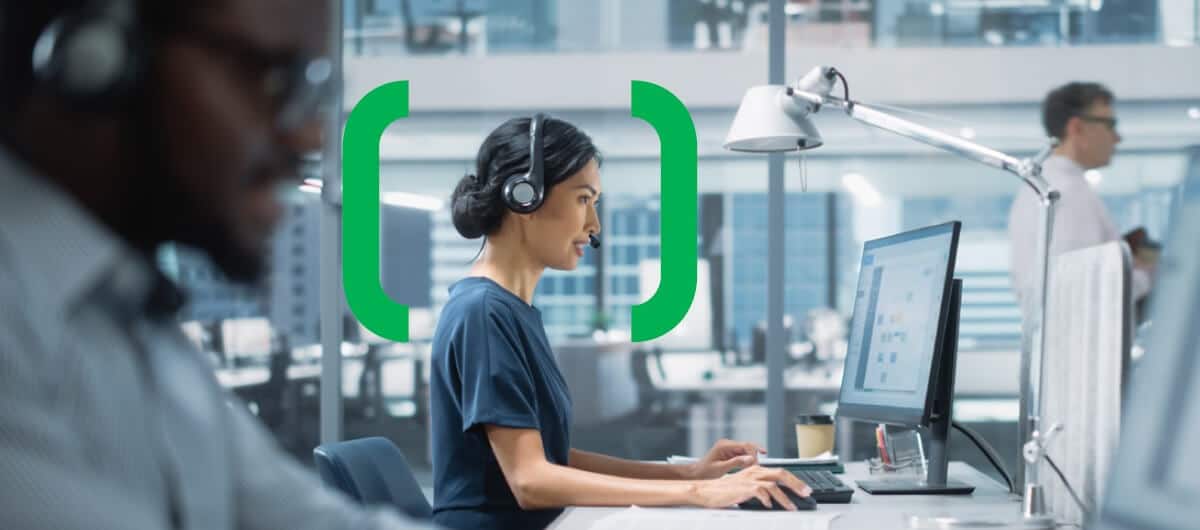Gone are the days where bosses could simply walk by an employee’s desk and peek at their computer screen to see if they were on task. At the end of last year, 45% of full-time employees worked from home at least part of the time, and many want to keep it that way.
Enter employee monitoring, not-so-affectionally known as “bossware.” It’s software that companies install to better understand what it is their employees are doing all day. Managers may be suspicious that someone is misusing company data. Security teams want to close any gaps left by people working off the network or on their own devices. But mostly, leaders simply want to understand how people are spending their time to make sure they’re productive, to help them be more productive, and increasingly to help employees avoid burnout.
All of these reasons are perfectly valid, and completely legal. But monitoring has effects on employees that company executives should address to ensure a healthy work environment, increase productivity and reduce employee turnover.
Admit to Monitoring
Many leaders, in HR or on the executive team, shy away from outwardly discussing employee monitoring with their staff. While the majority of companies are monitoring their employees in some way, only about half of employees are aware that their companies are doing so. This leaves the door open for issues and concerns that companies need to address.
Making employees aware of monitoring activities is actually a good thing. A growing number of states are requiring companies to disclose that they are using monitoring software including New York, Connecticut and Delaware. As employee monitoring becomes more popular, it’s likely that the list will continue to grow.
Being forthcoming about using monitoring creates a healthier line of communication between leaders and employees. A Gartner study found that monitoring software can contribute to employee burnout and overwork – the opposite of what monitoring software is implemented for. Compare two potential scenarios where a manager suspects an employee is neglecting their responsibilities:
They secretly employ monitoring software, use the information to prove that the employee is not productive and terminate them. Everyone else gets spooked and feels anxious about work.
They let their team know that they want to ensure that everyone is productive, even while working from home. They set expectations about what they want and let them know that they’re adding monitoring software. This serves to motivate said employee to become productive again and everyone else is a bit annoyed but gets used to being monitored.
Being clear about the use of monitoring software is a good long-term strategy. Most people are productive already, companies should remember to treat employees as “innocent until proven guilty” and give people clear information that can help them maximize their productivity and reduce concern.
Be Clear About Why
There is more than one way to explain why employee monitoring is necessary. Saying something like “we don’t trust you guys” is obviously not the right approach, and indicates a communication issue that’s much larger than anything that employee monitoring software can fix.
Companies should be able to justify monitoring with a few clear statements that can get everyone on board and working as a team. Companies with sensitive data or highly competitive industries might be keeping an eye on their assets. Companies with people who need to be available during key hours to take customer calls want to maintain a high level of service. And companies with a large number of at-home workers might simply want to make sure that people are not neglecting their responsibilities. Sharing this information makes people feel included in the process and more aware of what’s important.
Even when the reason for monitoring is simply to ensure productivity (a very common one at that,) the “why” should be discussed openly. People care about being able to work from home. Managers can explain that employee monitoring allows them to continue to work remotely while simply providing information back to the company that they would have had if they were in the office. This “quid pro quo” serves to minimize negativity.
Don’t Forget the What
Managers can also explain what they are looking for. When some people find out they are being monitored, they are worried that they can’t even check the weather on their computer without being “caught.” With a bit more communication about expectations, companies can encourage people to behave normally, productively and safely.
Not only that, being clear about what is being monitored encourages people to do the right thing from the get-go. If a company wants people to stop shopping online using work devices or ensure that they don’t use Slack to share sensitive customer data, they should be able to articulate that to employees.
For some companies, this is a bit tricky. For example, if an employer wants to monitor a large team of call-center reps, the last thing they want is to accidently explain to people how to game the system and get away with it. However, explaining that the software provides an understanding of their active time at their computers should be enough to show that the company is being open about monitoring.
Be Open to Feedback
While monitoring software is usually implemented with the intention of catching the odd employee who is unproductive, neglectful, or worse – many more good employees are affected. It’s important for managers to be open to discussing monitoring effects with employees and redrawing expectations as needed.
For example, salespeople might need more leeway to leave their desks to meet with clients. People who work from home might do better with a more flexible schedule than 9-5. And some people might need to be able to use their own mobile phone to answer emails while away from their desks.
These real-world situations show that employee monitoring is an evolving process, and there is no one-size-fits-all approach. With an open line of communication, companies can ensure that employee monitoring encourages productivity for good employees while providing the insights managers need to identify problems.

Insider Risk – How Prepared Are You?
Not every company is equally prepared to deal with insider risk. This report outlines the four stages of insider risk maturity and explores how to improve your insider risk preparedness.




